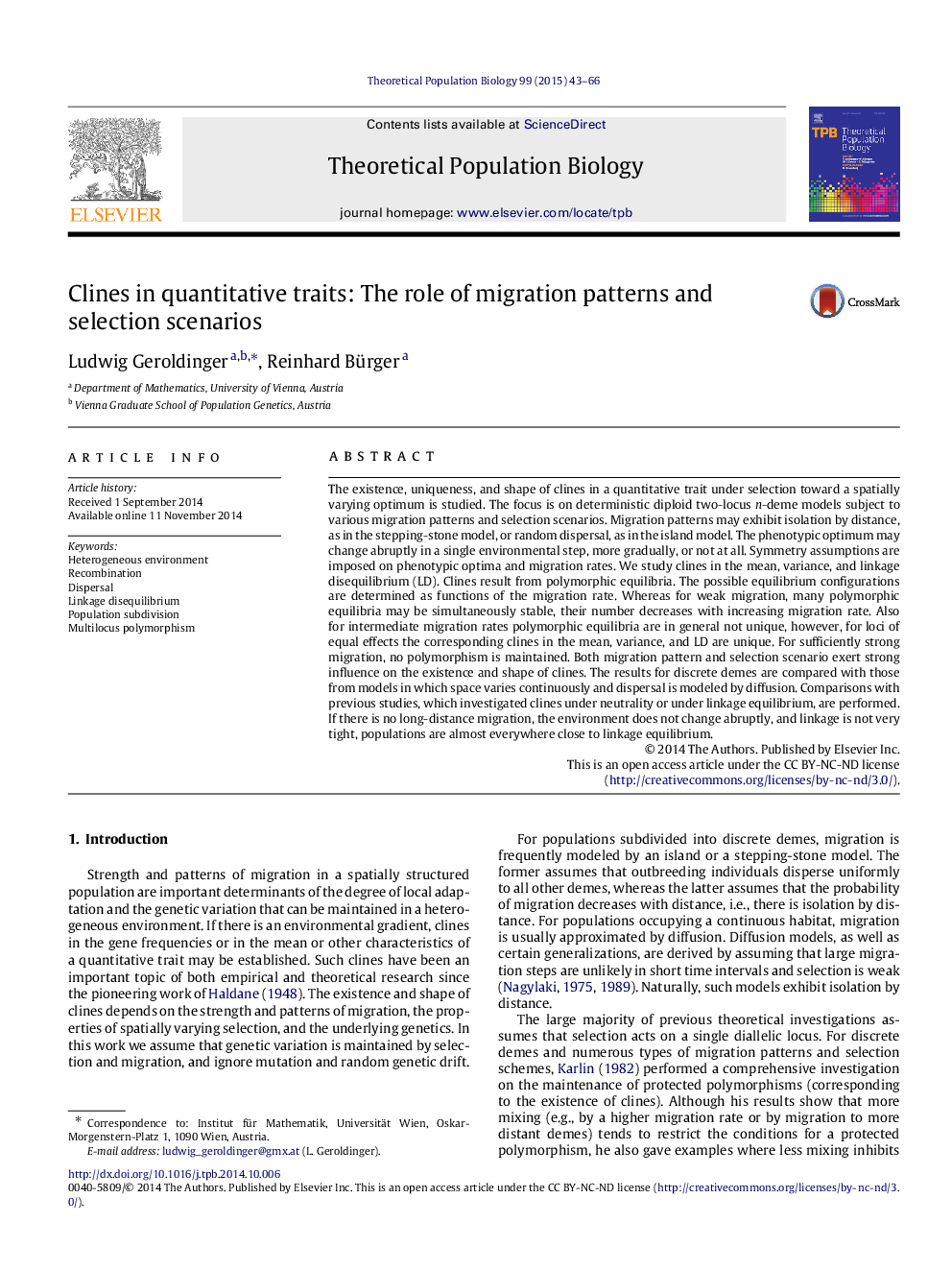| کد مقاله | کد نشریه | سال انتشار | مقاله انگلیسی | نسخه تمام متن |
|---|---|---|---|---|
| 6372354 | 1624153 | 2015 | 24 صفحه PDF | دانلود رایگان |
عنوان انگلیسی مقاله ISI
Clines in quantitative traits: The role of migration patterns and selection scenarios
دانلود مقاله + سفارش ترجمه
دانلود مقاله ISI انگلیسی
رایگان برای ایرانیان
کلمات کلیدی
موضوعات مرتبط
علوم زیستی و بیوفناوری
علوم کشاورزی و بیولوژیک
علوم کشاورزی و بیولوژیک (عمومی)
پیش نمایش صفحه اول مقاله

چکیده انگلیسی
The existence, uniqueness, and shape of clines in a quantitative trait under selection toward a spatially varying optimum is studied. The focus is on deterministic diploid two-locus n-deme models subject to various migration patterns and selection scenarios. Migration patterns may exhibit isolation by distance, as in the stepping-stone model, or random dispersal, as in the island model. The phenotypic optimum may change abruptly in a single environmental step, more gradually, or not at all. Symmetry assumptions are imposed on phenotypic optima and migration rates. We study clines in the mean, variance, and linkage disequilibrium (LD). Clines result from polymorphic equilibria. The possible equilibrium configurations are determined as functions of the migration rate. Whereas for weak migration, many polymorphic equilibria may be simultaneously stable, their number decreases with increasing migration rate. Also for intermediate migration rates polymorphic equilibria are in general not unique, however, for loci of equal effects the corresponding clines in the mean, variance, and LD are unique. For sufficiently strong migration, no polymorphism is maintained. Both migration pattern and selection scenario exert strong influence on the existence and shape of clines. The results for discrete demes are compared with those from models in which space varies continuously and dispersal is modeled by diffusion. Comparisons with previous studies, which investigated clines under neutrality or under linkage equilibrium, are performed. If there is no long-distance migration, the environment does not change abruptly, and linkage is not very tight, populations are almost everywhere close to linkage equilibrium.
ناشر
Database: Elsevier - ScienceDirect (ساینس دایرکت)
Journal: Theoretical Population Biology - Volume 99, February 2015, Pages 43-66
Journal: Theoretical Population Biology - Volume 99, February 2015, Pages 43-66
نویسندگان
Ludwig Geroldinger, Reinhard Bürger,